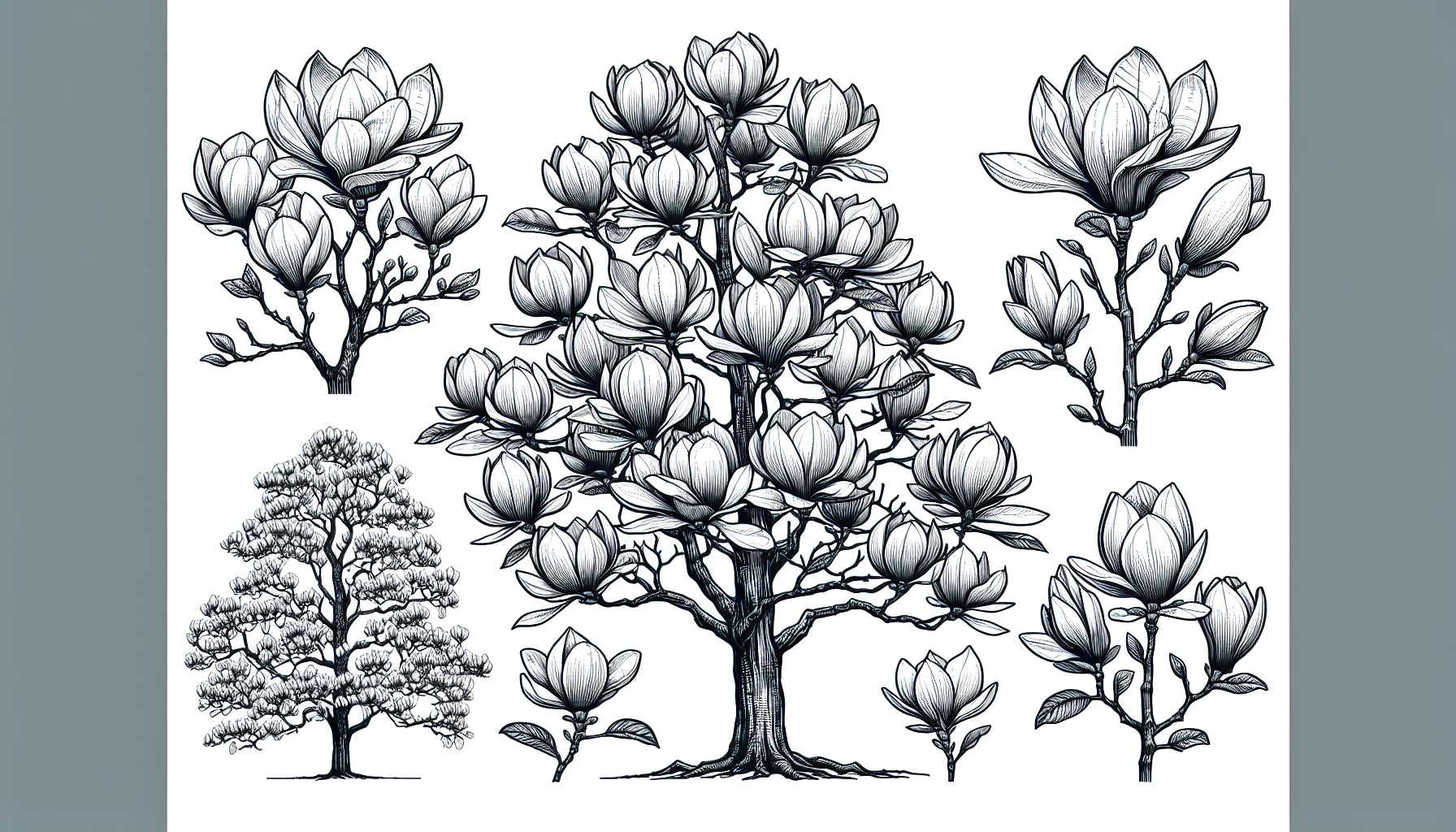
With their dramatic blossoms and lush greenery, these trees have become an iconic symbol of beauty, grace, and southern hospitality.
A member of a family that predates even the bees, magnolias are among the most ancient flowering plants. These trees, boasting longevity and robustness, are a testament to nature’s resilience and adaptability.
They have graced our planet for eons, with fossil remnants validating their existence since prehistoric times. Today, the magnolia family encompasses over 200 species, painting landscapes worldwide with their charm.
Known for their large, aromatic blossoms, the magnolia’s flowers are a sight to behold. Ranging in hues from pure white to vibrant pink, the petals unfurl to reveal a striking contrast against their glossy, evergreen leaves. Each variety of magnolia has its unique characteristics, yet all share the same captivating appeal.
The Southern Magnolia, for instance, stands tall and majestic, with glossy leaves providing an evergreen backdrop that highlights its creamy-white flowers. On the other hand, the Star Magnolia lives up to its name, offering a celestial display of brilliant white flowers that dazzle against the spring sky. Meanwhile, the Saucer Magnolia welcomes early spring with a profusion of large, saucer-shaped flowers, their pink-purple petals creating a riot of color.
Aside from their aesthetic allure, magnolia trees offer a host of other benefits. They’re an excellent addition to any landscape, providing shade and privacy with their thick foliage.
Magnolias are relatively low-maintenance, requiring little more than a sunny spot and well-drained soil to thrive.
While they do grow slowly, the wait is worthwhile as mature trees can reach impressive sizes, becoming focal points in any garden.
Moreover, the magnolia tree’s fragrant flowers not only infuse the surroundings with a delightful, exotic aroma but also attract an array of beneficial insects. Butterflies, bees, and other pollinators are drawn to the nectar and pollen-rich blossoms, turning the vicinity into a humming hub of biodiversity.
However, growing a magnolia tree is not without its challenges. These trees can be prone to certain diseases and pests, requiring a watchful eye and timely intervention.
They also prefer slightly acidic soils and may struggle in alkaline conditions. But with adequate care and attention, these potential issues can be mitigated, ensuring the magnolia thrives for years to come.
Magnolia trees are also a source of cultural and artistic inspiration. From literature to cinematography, these flowering trees have been romanticized and revered for centuries. They are often seen as symbols of grace, dignity, and nobility, their striking blooms embodying a sense of timeless elegance.
Moreover, magnolias have significant therapeutic applications. The bark of some species is used in traditional medicine systems for its potential benefits in managing anxiety and promoting sleep. Furthermore, the essential oil extracted from magnolia flowers is known for its soothing properties and is a favorite in aromatherapy.
It’s no wonder that the magnolia tree, with its unparalleled grace, enduring presence, and multiple benefits, continues to fascinate us. Whether you’re an avid gardener looking to add an enchanting feature to your landscape, or simply a nature lover smitten by their ethereal beauty, magnolias are sure to captivate your senses and leave you in awe of nature’s timeless marvels.